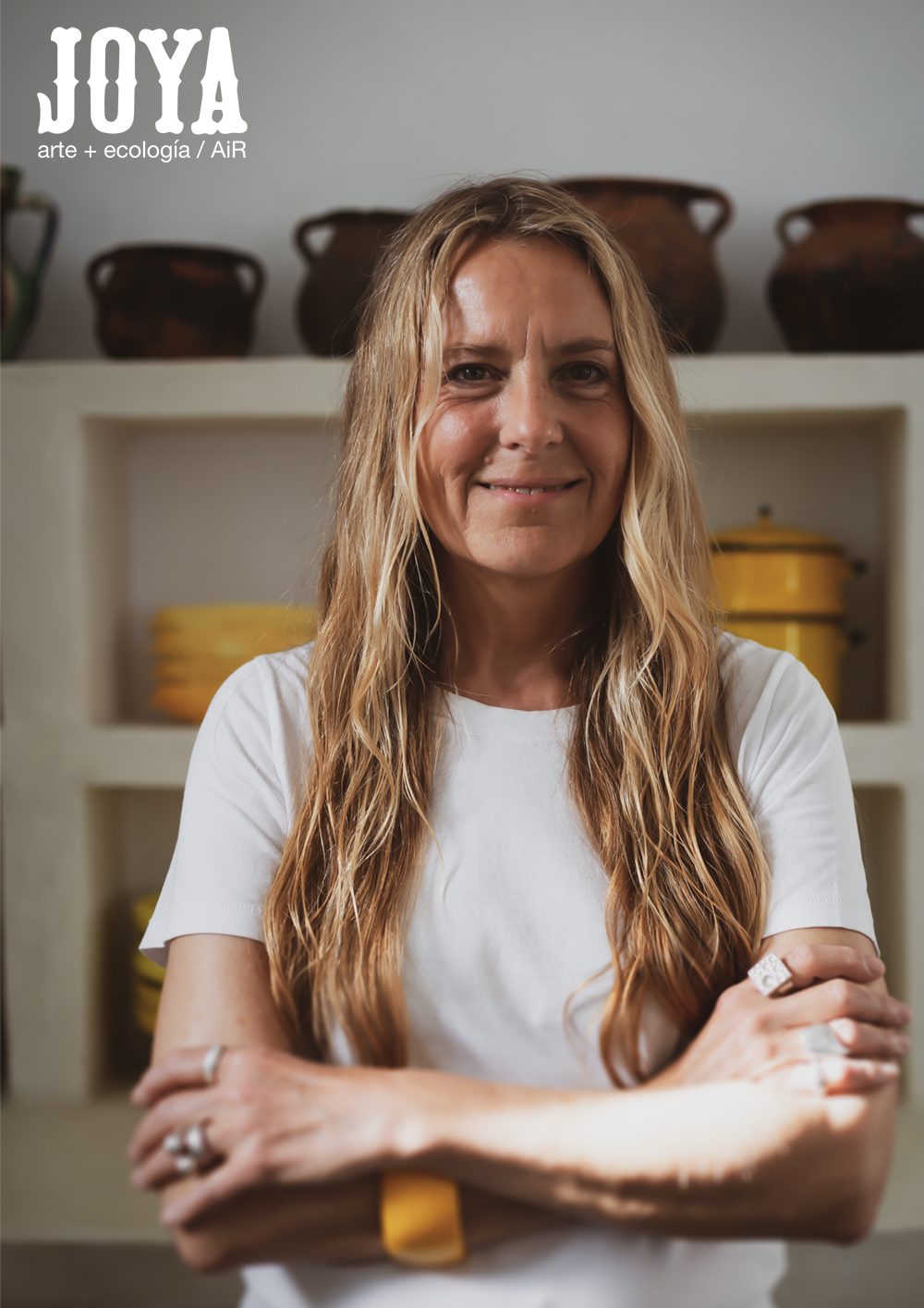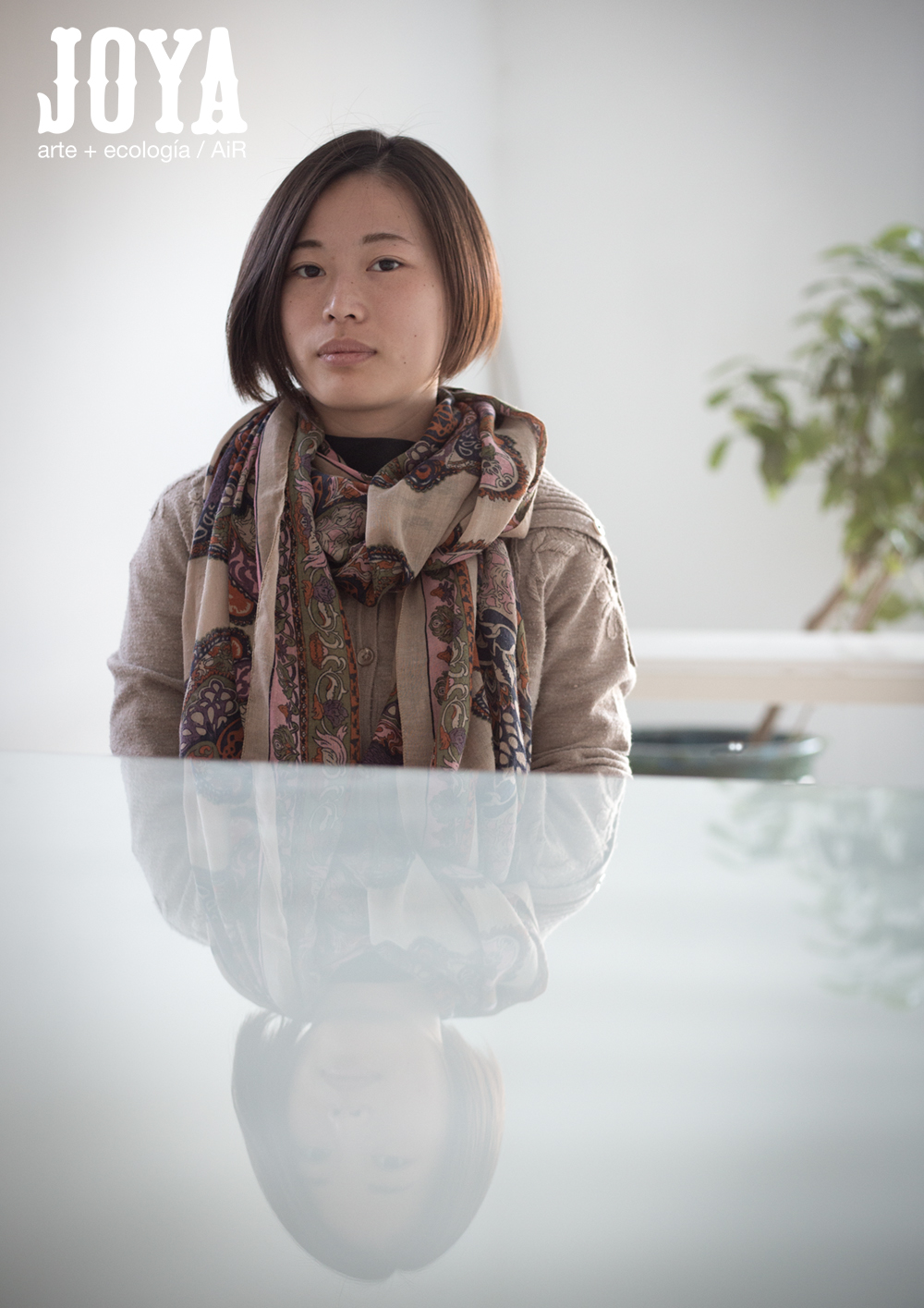photo Simon Beckmann
‘La relación con el tiempo que estableces al llegar a JOYA: AiR es tangible y contradictoria: por un lado, el tiempo se suspende como si quedaras atrapado en el frame de una película y, a su vez, los días pasan con una rapidez abrumadora. Esta ruptura con la cronología habitual de nuestras rutinas, da lugar a un ritmo vital alternativo cuyo motor es el equilibrio con la naturaleza.
Estar una semana en una casa, un entorno y con una gente maravillosa sabe a poco. JOYA: AiR ha sido una experiencia inolvidable en todos los aspectos y cuando vas por primera vez ya estás pensando en el siguiente proyecto que harás cuando vuelvas. La Cortijada Los Gázquez está a tan solo unas horas de Málaga, ciudad donde resido, pero las conversaciones con los compañeros, las cenas en grupo, los paseos por los senderos y la montaña, la infinita tranquilidad… me han permitido escuchar y ver un universo nuevo y sugerente.
En este entorno del Parque Natural Sierra María-Los Vélez, la naturaleza deja claro que no tiene límites. Asistes como humilde observador a un escenario en el que todo se intensifica y los tonos ocres, amarillos y verdes del campo existen en un tipo de belleza que no se puede captar. Recuerdo la emoción que sentí al llegar a la cima de Sierra Gigante: después de una hora de subida llegué al punto de mayor altitud, giré sobre mi misma en un ángulo de 360° y entendí la grandeza de lo que me rodeaba. Apenas se pueden ver un par de pueblos a lo lejos, y entonces las montañas, campos, árboles, el cielo, te cuentan su historia en silencio.
Al principio de mi estancia estaba escribiendo e investigando una serie de nociones relacionadas con el movimiento, el cuerpo y la materia, pero los paseos por los alrededores de la casa transformaron, casi sin darme cuenta, las letras en acciones. Andar, escalar, ver, caminar sobre trigo, rocas o barro seco. Estos recorridos que hice desde el primer día, fueron el punto de partida para el proyecto que realicé. Me di cuenta de que el propio acto de caminar e intentar recorrer distintos terrenos hacía conectar mi cuerpo de un modo muy especial con el entorno. No se trataba de andar por una calle, de un edificio a otro, en línea recta, sino que tenía que ver con escuchar la materialidad del suelo que pisaba y responderante las necesidades. Los campos de cardos, las zonas montañosas con piedras, cada una me llevaba a estar haciendo y siendo de distintas formas. Comencé a interesarme entonces por aprehender todos los matices que surgían en la interacción entre cuerpo y terreno/espacio natural. Capté por un lado los movimientos de las piernas, los brazos, la flexión de las articulaciones, el esfuerzo de los músculos, la dirección de la mirada y, por otro, el tiempo que tardaba en recorrer cada espacio, las emociones, ideas o palabras que surgían en el proceso. A partir de este estudio de campo, realicé una serie de grabaciones en vídeo y de dibujos que están a medio camino entre las instrucciones para entender dichos espacios y la documentación de una suerte de performance que no podemos saber muy bien si es real o imaginaria.
Tener a Simon y Donna como anfitriones ha sido uno de los mayores placeres. El paisaje y la casa te hacen sentir especial, pero ellos han conseguido cultivar un entorno acogedor en el que no dudas en querer implicarte. Su proyecto vital, que entiende la cultura como agente fundamental en la ecología y conservación del medio ambiente, es inspirador. Vivir en una casa sostenible e independiente basada en técnicas tradicionales, ha sido una gran oportunidad. Toda esta energía positiva y renovadora hacen a JOYA un lugar ideal para investigar, experimentar y sentir.
Muchas gracias a JOYA: AiR por una experiencia que ha sido pura belleza y que espero pronto volver a disfrutar.
Delia Boyano




































